Product pictures
| Amount Per 2 tbsp | |||
| Calories | 50 Kcal (209 kJ) | ||
| Calories from fat | 27 Kcal | ||
| % Daily Value* | |||
| Total Fat | 3g | 5% | |
|---|---|---|---|
| Saturated Fat | 2g | 10% | |
| Cholesterol | 10mg | 3% | |
| Sodium | 150mg | 6% | |
| Total Carbs | 4g | 1% | |
| Sugars | 1g | 4% | |
| Protein | 1g | 2% | |
| Vitamin A | 0.1mg | 2% | |
| Calcium | 40mg | 4% | |
* Percent Daily Values are based on a 2000 calorie diet. Your daily values may be higher or lower depending on your calorie needs.
Find out how many calories should you eat.
Ingredients And Nutrition Overview
Best
choice Good
choice Poor
choice Avoid
it!
choice Good
choice Poor
choice Avoid
it!
-
WeightWatchers Points: 1.3, PointsPlus: 1, SmartPoints: 2
WeightWatchers Points are estimated by carbohydrates, fats, protein and fiber in product. They are not an affirmation of better quality or nutritional value of the product or its manufacturer. Only way to count for dieters. Less points are better.
Read more at Weight watchers diet review -
Convert Salt tsps to Sodium mg easily
Salt (NaCl) is not excactly sodium (Na).
It is not right to use these terms as synonyms.
The FDA recommended limit of sodium is 2,300 mg per day (or even less - about 1500 mg while one is on low sodium diets).
This is much less than the weight of salt.
(5,750 mg per day or 3,750 mg for low sodium diet) and not so convenient to calculate.
Know how much sodium is in your salt - without a calculator:
1/4 tsp salt = 600 mg sodium
1/2 tsp salt = 1200 mg sodium
3/4 tsp salt = 1800 mg sodium
1 tsp salt = 2300 mg sodium -
Great! Contains less than 1.5 tsp of sugar.
Great! Contains less than 1.5 tsp of sugar per serving!
-
Interested in getting more protein?
Protein is important, but some of the protein you find in this product isn't exactly natural.
The protein comes from one of the following sources:
- milk protein concentrate
- whey protein isolate
- soy protein isolate
and that it's not ideal to get protein only from processed goods.
If you're looking for more protein, try beans, quinoa, nuts, seeds, peas and spinach & leafy greens.
Not only do they have protein, they're filled with other vitamins and minerals. -
Carrageenan is an additive made from seaweed.
It is used as a thickener in products such as ice cream, jelly, chocolate milk, infant formula, cottage cheese.
It is a vegetarian and vegan alternative to gelatin.
It has been used for hundreds of years in Ireland and China, but only made headway into modern food processing in the last 50 years.
The processing steps after harvesting the seaweed include drying, grounding, filtration, treatment with potassium hydroxide, removal of cellulose by centrifuge, concentration by evaporation, drying, and grounding.
Interestingly, the Philippines account for the vast majority of the world supply of carrageenan.
In some animal studies, carrageenan was shown to cause intestinal lacerations and tumors.
A 2001 meta-study of 45 peer-reviewed studies concluded that carrageenan consumption may result in gastrointestinal malignancy and inflammatory bowel.
The FDA has approved carrageenan as safe, basing its decision on industry funded studies.
European agencies and the World Health Organization have also deemed carrageenan safe, with the exception of infant formula.
The fear is the a baby's gut may be unable to handle the large carrageenan molecules.
In some individuals carrageenan may cause intestinal discomfort or worse. -
Has EDTA, on FDA's toxicity watchlist
Ethylenediaminetetraacetic acid (EDTA) is a chemical added to certain foods and beverages to keep their color and flavor.
EDTA is known as a persistent organic pollutant. It resists degradation from biological, chemical, and photolytic processes.
It may irritate the skin or cause skin rash and even asthma.
It is is generally recognized as safe by FDA, but is on it's list of food additives to be studied for toxicity.
Allergens
Milk Allergy, Lactose Allergy, Soy Allergy, Corn Allergy, Gluten Allergy, Wheat Allergy
French onion dip Ingredients
Acidified Sour Cream (Cream, Milk, Non Fat Dry Milk, Modified Food Starch, Tapioca Flour, Gelatin, Mono and Diglycerides, Lactic Acid, Citric Acid, Guar Gum, Carrageenan, Mono Potassium Phosphate, Artificial Flavor, and Potassium Sorbate [to Preserve Freshness), Water, Dehydrated Onion, Maltodextrin, Modified Food Starch, Salt, Titanium Dioxide (Color), Sugar, Onion Juice Concentrate, Dried Romano Cheese (Part Skim Cow's Milk, Cheese Culture, Salt, Enzymes], Sodium Phosphate), Hydrolyzed (Soy Protein, Corn and Wheat Gluten, Citric Acid, Xanthan Gum, Sorbic Acid and Sodium Benzoate (to Prevent MNEW ), Pectin, Sodium Phosphate, Garlic, Disodium Inosinate and Guanylate, Calcium Disodium EDTA (Protects Flavor).
You Might Also Like
% RDI of Main Nutrition Facts
3%
of RDI* (50 calories) 29.6 g
-
Cal: 2.5 %
-
Fat: 4.6 %
-
Carb: 1.3 %
-
Prot: 2 %
-
0%25%75%RDI norm*
Calories Breakdown
- Carbs (34%)
- Fat (57.4%)
- Protein (8.5%)
Get Your Recipe of Health!
Follow RecipeOfHealth on Facebook!

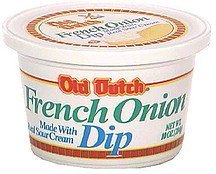
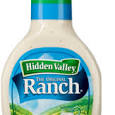
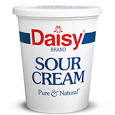
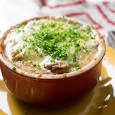
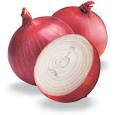
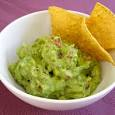
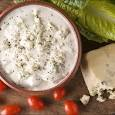

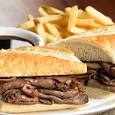
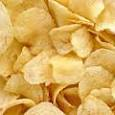
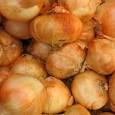
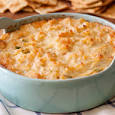
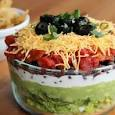
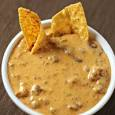

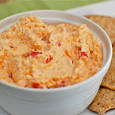
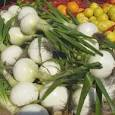

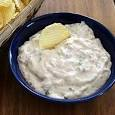

















Add your comment